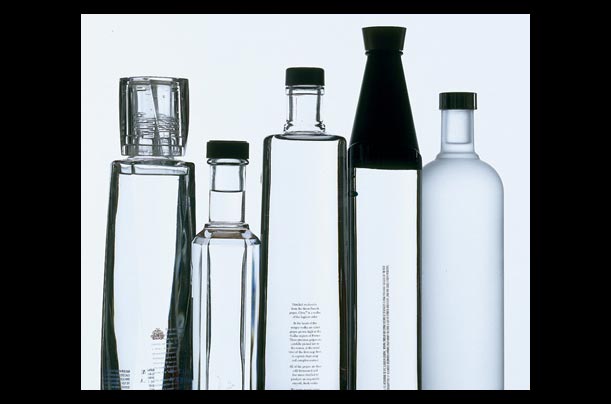
Wyborowa Single Estate vodka is a difficult thing to grasp. Not intellectually speaking — by now, spending $30 a bottle for an essentially odorless, flavorless liquid is considered a sign of excellent taste — but the bottle is hard to grip. The top twists away from the base, knocking it off balance in one's hand, making every pour an adventure and giving it the appearance of a Frank Gehry creation.
Actually, it is a Gehry creation. And he is just the tip of this vodka's pedigree. Each bottle is the product of a single farm in Poland, where the rye is grown, harvested and distilled on the premises. Whether all this effort adds anything to the flavor is debatable, but it does provide a conversation topic at a chic cocktail party generously underwritten by the vodka's parent, the spirits giant Pernod Ricard USA. Wyborowa Single Estate's birth, several years in the making, is a textbook example of how to launch a "superpremium" vodka. Beginning in the mid-'90s with Belvedere and Grey Goose, superpremiums have transformed vodka's image from a flavorless mixer into an "affordable luxury" that costs only $15 a cocktail.
Crafting such an image is a delicate business. In Wyborowa's case, it involved taste testing, mythmaking and Gehry-branded packaging, and culminated in a roll-out that began with bottles given to Oscar nominees last spring and will finish with national distribution next year. One might think only a true connoisseur could discern, or care about, the nuances of different superpremiums, in the same way fans of single-malt Scotches and small-batch bourbons latch on to favorite labels. But the goal is to add more cachet than character to the drink. Training drinkers to call for your brand when ordering a cosmopolitan is the industry's Grail. By submerging the vodka in cranberry juice, the consumer is effectively paying for nothing but the brand.
So far, only Grey Goose has managed to achieve that status, which is why it sold 1.4 million cases in the U.S. last year — and is projected to sell 28% more than that this year. Absolut is still the most popular vodka brand in the U.S., selling 4.5 million cases annually, but it stopped growing at about the time Grey Goose and its peers took flight. Spirits-industry analysts say that's why privately owned Bacardi recently bought Grey Goose for $2 billion: it wanted to have a hit superpremium vodka in its stable before floating an initial public offering.
That would also explain the wave after wave of superpremiums appearing on both coasts. Last year's buzziest brand was Cîroc — distilled from two varieties of grapes commonly used to make Armagnac — which is a joint venture between LVMH (owner of the champagnes Moët and Dom Pérignon) and Diageo, which also owns the decidedly down-market Smirnoff. Despite Cîroc's popularity, Diageo plans to increase production from 53,000 cases to only 85,000 cases next year. "It's a question of philosophy," says Efren Puente, the brand's senior manager. "It's not about mass messages. It's about the story and having people find out for themselves."
The other majors have followed. Pernod Ricard has Wyborowa Single Estate. Allied Domecq is testing what might become the first widely distributed super-superpremium, the $59.99 Stoli Elit. And V&S Group, maker of formerly trendy Absolut, barreled into the market last spring with Level.
"Vodka has attracted a lot of people who brought their own ideas to the category and imposed them on it," says Jan-Roman Potocki, a descendant of Polish counts and the standard bearer of his family's traditional recipe, a superpremium also named Potocki. "The market has gone all over the place, from the $60 bottle to the banana-flavored version." And now even Frank Gehry has entered the fray.